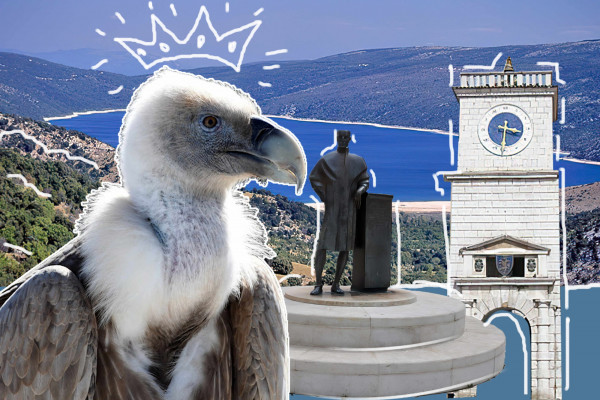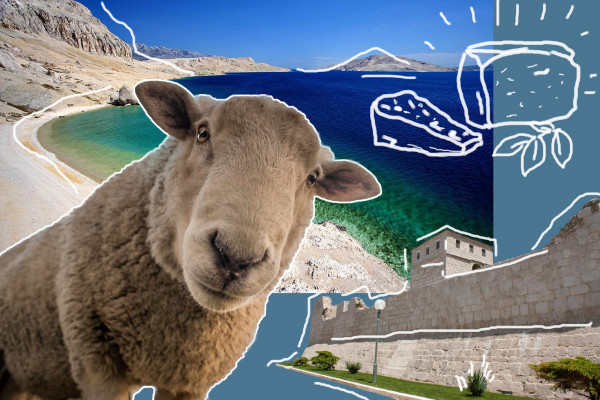Show all photos
16 interesting places in Split
Settled on the beautiful Dalmatian coast of Croatia, Split is the second largest city in Croatia. This 1700 year old lively and stable place perfectly combines the urban way of life with the historical architecture.
Split has been continuously inhabited for thousands of years, starting with the Romans, then the Byzantines, the Croats, the Venetians and finally the Austrians, who left only in 1918. All these cultures have contributed to the present-day appearance of the city, its unique architecture, culture and fascinating monuments.
With that in mind, we bring you a list of the most interesting places you should not miss on your visit to Split:
1. Diocletian's Palace-It was built for the Emperor Diocletian, and today is one of the main sights of Croatia, a UNESCO World Heritage Site and a fascinating place to explore.
2. The basements of Diocletian's Palace - in Roman times they had the function of storage space of the palace, and today they represent one of the best preserved ancient complexes of this kind in the world, and are responsible for the historic core of Split in 1979 included in the UNESCO World Heritage List.
3. Golden Gate - Through them, Emperor Diocletian stepped into Diocletian's Palace on June 1, 305, hence the name Golden Gate.
4. Silver Gate-Through them, along the main street, Decumanus, Diocletian's Palace was entered in an east-west direction, all the way to the Iron Gate, and today to the Square, the central town square.
5. The Iron Gate - is the only one of all four through which life has circulated in all 17 centuries of Split's history. An interesting clock with 24 digits is visible here.
6. The brass gate- was also called the Security Gate, because it ensured escape by sea in the event of an attack on the palace from the land. Today, they have become the "main" because tourists usually start professional sightseeing through them.
7. Temple of Jupiter - The Temple of Jupiter in Split is a temple dedicated to the god Jupiter, the main deity of the ancient Romans. It is located in the western part of Diocletian's Palace near the Peristyle, the central square of the imperial complex.
8.Cathedral of Saint Domnius - Cathedral of Saint Domnius is known for many things, and is a kind of the main recognizable symbol of Split, but what makes it really special is the fact that it houses the mausoleum of the Roman emperor Diocletian, a pagan and persecutor of Christians.
9. Church of St. Martin - the smallest and one of the oldest churches in Split, and is considered the best preserved sacral monument from ancient times.
10. Riva - the most famous Split promenade / promenade. It began to take on its recognizable form today two centuries ago. Today, this promenade has become the city living room, the most popular and most important public space in Split.
11.Pjaca (main city market )-Split began to expand rapidly at the end of the 13th and the beginning of the 14th century, and in that period National square, also known as Pjaca, was created. Here is the center of Split life, and many sights are visible.
12.Procurative (Republic Square) -a large square located west of the waterfront where you can see a beautiful fountain, beautiful Neo-Renaissance red buildings with arches and a beautiful view of the waterfront and the port of Split.
13. Vestibule - a monumental vestibule or entrance hall to Diocletian's residence which entered the residential part of the palace.
14. Marmontova Street - unique, full of sights - it houses the Alliance Francaise, the first Karaman cinema in Split, beautiful Art Nouveau buildings Duplancic and Toncic, Salon Galic and Photo Gallery, numerous shops, etc.
15. Veli Varos - the oldest district in Split, until recently was a symbol of Split fishermen. Here is the famous Church of St. Mikula .
16. Split market - a unique insight into the autochthonous Split life and local products, an increasingly popular destination among tourists eager to immerse themselves in the local spirit.
Don’t forget to take a picture of each of the places you’ve visited and make sure you share your impressions with us in the comments.
Itinerary
Place 1
Diocletian's Palace
Place 1
Diocletian's Palace
It was built for the Emperor Diocletian, and today is one of the main sights of Croatia, a UNESCO World Heritage Site and a fascinating place to explore.
Place 2
The basements of Diocletian's Palace
Place 2
The basements of Diocletian's Palace
in Roman times they had the function of storage space of the palace, and today they represent one of the best preserved ancient complexes of this kind in the world, and are responsible for the historic core of Split in 1979 included in the UNESCO World Heritage List.
Place 3
Golden Gate
Place 3
Golden Gate
Through them, Emperor Diocletian stepped into Diocletian's Palace on June 1, 305, hence the name Golden Gate.
Place 4
Silver Gate
Place 4
Silver Gate
Through them, along the main street, Decumanus, Diocletian's Palace was entered in an east-west direction, all the way to the Iron Gate, and today to the Square, the central town square.
Place 5
The Iron Gate
Place 5
The Iron Gate
is the only one of all four through which life has circulated in all 17 centuries of Split's history. An interesting clock with 24 digits is visible here.
Place 6
The brass gate
Place 6
The brass gate
was also called the Security Gate, because it ensured escape by sea in the event of an attack on the palace from the land. Today, they have become the "main" because tourists usually start professional sightseeing through them.
Place 7
Temple of Jupiter
Place 7
Temple of Jupiter
The Temple of Jupiter in Split is a temple dedicated to the god Jupiter, the main deity of the ancient Romans. It is located in the western part of Diocletian's Palace near the Peristyle, the central square of the imperial complex.
Place 8
Cathedral of Saint Domnius
Place 8
Cathedral of Saint Domnius
Cathedral of Saint Domnius is known for many things, and is a kind of the main recognizable symbol of Split, but what makes it really special is the fact that it houses the mausoleum of the Roman emperor Diocletian, a pagan and persecutor of Christians.
Place 9
Church of St. Martin
Place 9
Church of St. Martin
the smallest and one of the oldest churches in Split, and is considered the best preserved sacral monument from ancient times.
Place 10
Riva
Place 10
Riva
the most famous Split promenade / promenade. It began to take on its recognizable form today two centuries ago. Today, this promenade has become the city living room, the most popular and most important public space in Split.
Place 11
Pjaca (main city market )
Place 11
Pjaca (main city market )
Split began to expand rapidly at the end of the 13th and the beginning of the 14th century, and in that period National square, also known as Pjaca, was created. Here is the center of Split life, and many sights are visible.
Place 12
Procurative (Republic Square)
Place 12
Procurative (Republic Square)
a large square located west of the waterfront where you can see a beautiful fountain, beautiful Neo-Renaissance red buildings with arches and a beautiful view of the waterfront and the port of Split.
Place 13
Vestibule
Place 13
Vestibule
a monumental vestibule or entrance hall to Diocletian's residence which entered the residential part of the palace.
Place 14
Marmontova Street
Place 14
Marmontova Street
unique, full of sights - it houses the Alliance Francaise, the first Karaman cinema in Split, beautiful Art Nouveau buildings Duplancic and Toncic, Salon Galic and Photo Gallery, numerous shops, etc.
Place 16
Split market
Place 16
Split market
a unique insight into the autochthonous Split life and local products, an increasingly popular destination among tourists eager to immerse themselves in the local spirit.
Guide Location
Reviews
4.5/5
Excellent
Based on
28 reviews
Excellent
15
Very Good
13
Average
0
Poor
0
Terrible
0
Norbert
28/10/2021
The guide was really handy when I visited this town. It had fascinating historical monuments. The guide helped me locate this places. It was also easier to move within this town thanks to the guide.
René
24/10/2021
We enjoyed some of the best places in Split as we had a tour around the place. We loved the scenic views from the sites including the Diocletian's Palace and with the help of the guide we were able to visit most of the places on the guide. We enjoyed ourselves and the trip was worth the time.
Rasmus
23/10/2021
I got to know of other places other than the Diocletian's palace through the guide. It gave me a very detailed information on other tourist destinations. I found the guide to be very efficient. I visited 10 of this locations and each one just stood out
Jan
13/10/2021
I got to to see the bell tower, roman guard promenande, and city clock with 24 digits located in this location as stated in the guide.
Andreas
06/10/2021
This is a very small temple dedicated to the Roman god Jupiter. I loved admiring its beautiful ceiling and its structure was incredible. The historyof religion in this place was fantastic. I really appreciate the guide
Dominion
24/09/2021
Important guides that led us through our tour in Split as we visited the Church of St Martin and loved the experience at the place and other lovely sites on the guide.
Cindy
19/09/2021
Awesome views from Procurative (Republic Square) that we visited and other places from the guide and we enjoyed the tour completely.
Showing 15 - 21 of 28 total













